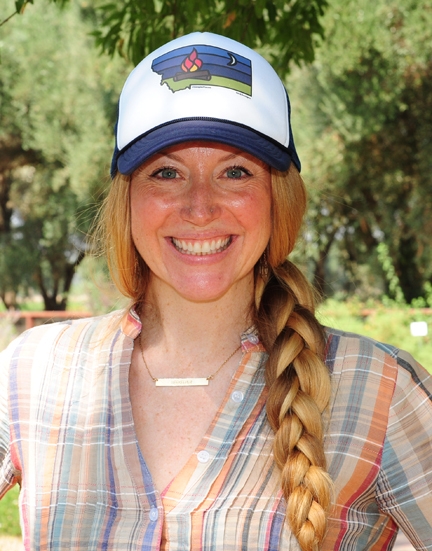
Her name is Sarah Red-Laird, and she is here to present an interactive educational program involving bees and beekeeping, honey, beeswax and bee habitat to students from Peregrine School, Davis. It's part of her "Bees and Kids" program, funded by the American Beekeeping Federation's Foundation for the Preservation of Honey Bees.
She's speaking to them as part of the Western Apicultural Society's 40th annual conference, Sept. 5-8.
The students are super excited.
Holding up fruit after fruit, she asks if they like strawberries, apples, oranges and lemons, all bee-pollinated. They eagerly raise their hands. She tells them that bees are responsible for providing one-third of the food we eat, including fruits, vegetables and nuts (almonds). Our shopping carts would be sparse if there were no bees, she says. She quizzes them about grapes, rice and oats, which are not bee-pollinated.
Then she turns to honey.
"How much honey does a bee make in her lifetime?" she asks. "Is it 1 cup, 1 teaspoon or 1/12th of a teaspoon? if you think it's one cup, raise your hand." Half a dozen hands shoot up.
"If you think it's one teaspoon, raise your hand." A few more raise their hands.
"If you think it's 1/12th of a teaspoon, raise your hand." One person responds.
"The correct answer," says Sarah the Bee Girl, "is 1/12th of a teaspoon. That's how much a honey bee makes in her lifetime."
"I guessed that!" yells a little girl.
"Did you?" Sarah asks, approvingly. "You're a smartie," she praises.
"We didn't," a boy laments.
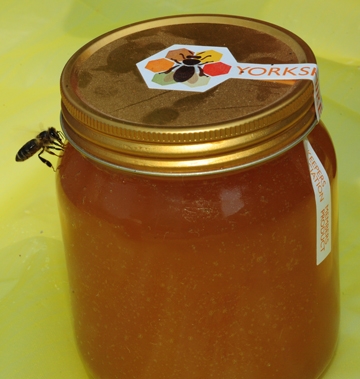
Sarah continues. "How many flowers does it take the bees to make one pound of honey?" she asks, holding up a jar of honey.
The students respond with answers that range from 99 to 100 to 200 to 1000 to 2000 to 8000 to 1 billion.
"The correct answer is 2 million," she tells them. "it takes 2 million flowers to fill this one jar of honey."
Sarah drives home the point with: "The best thing to do to help bees is to plant flowers. Let's say it all together. what can you do to help bees?
"Plant flowers!" they chorus.
Later she reads a book and then asks them to answer questions about nurse bees, house bees, scout bees, guard bees, queen bees, foragers and drones. Each person who answers the question correctly is adorned with props depicting that bee.
The first graders love it! They gigle, laugh and cheer.
Next they move in small groups to the educational stations where they taste honey, learn about bee habitat and bees wax, and see honey bees and other bees up close.
It's obvious that Sarah loves bees and wants others to love them, too.
Sarah says her love of bees began in Southern Oregon, on the deck of her aunt's cabin, at the end of a country road. She received her degree, with honors, in resource conservation from the University of Montana and did research in Jerry Bromenshenk Honey Bee Lab. She presented her beekeeping findings at the National Conference on Undergraduate Research on "How to Keep 100,000 Girlfriends, the Careful Relationship of a Beekeeper and Her Honey Bees."
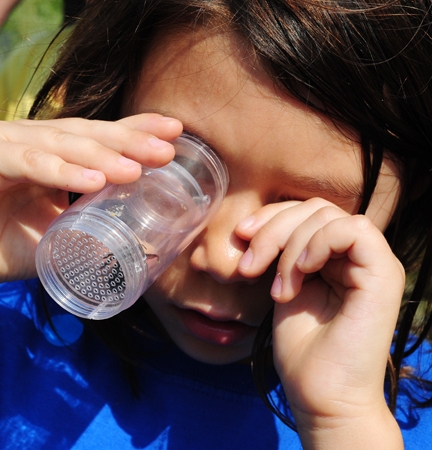
Among the UC Davis personnel assisting her at the haven were:
- Robbin Thorp, distinguished emeritus professor of entomology, UC Davis Department of Entomology and Nematology, who caught and released bees with a device that included a magnifying glass
- Staff research associates Bernardo Niño of the Harry H. Laidlaw Jr., Honey Bee Research Facility/UC Davis Department of Entomology and Nematology, who staffed the beeswax table, where children drew pictures with crayons
- Staff research associate and Charley Nye of the Harry H. Laidlaw Jr., Honey Bee Research Facility/UC Davis Department of Entomology and Nematology, who staffed the habitat table, where the children learned about where the bees live.
- Zoe Anderson, a UC Davis undergraduate student majoring in animal biology, assisted with the honey tasting. The youths all agreed they liked Sarah's vetch honey the best.
Attached Images:
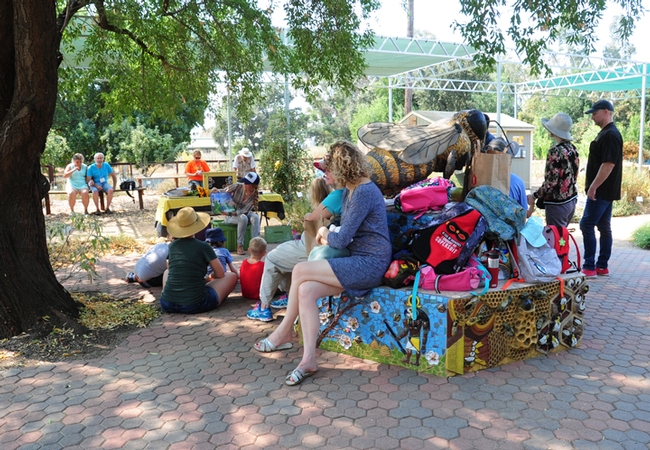
First graders, school officials and parents from Peregrine School cluster around a bee sculpture at UC Davis Häagen-Dazs Honey Bee for a "Kids and Bees" program. (Photo by Kathy Keatley Garvey)
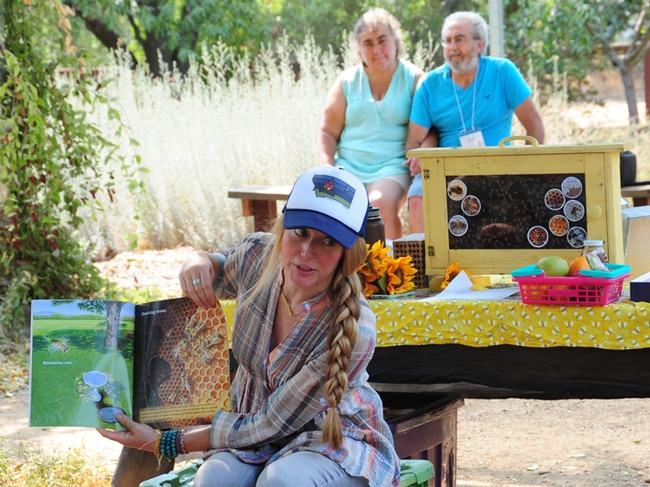
Sarah the Bee Girl reads a book about bees. In back are WAS members Cyndi and Jim Smith of Donney Lake, Wash. Cyndi serves as the secretary. (Photo by Kathy Keatley Garvey)
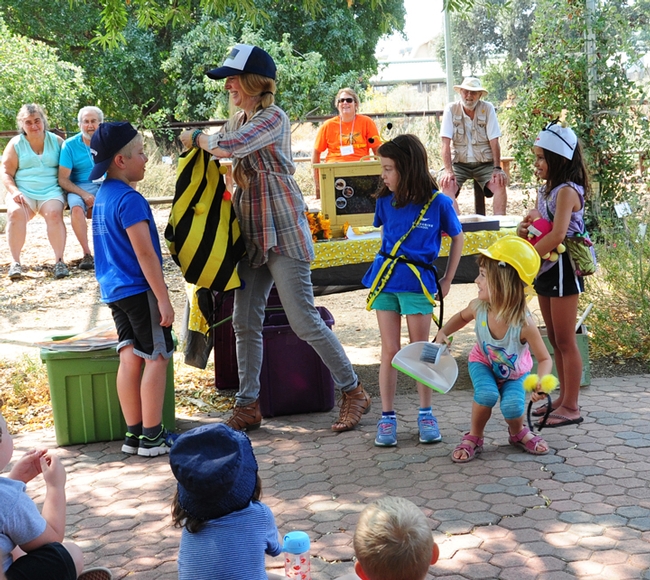
Sarah the Bee Girl outfits a first grader with a forager costume for correctly answering a question about foragers. (Photo by Kathy Keatley Garvey)
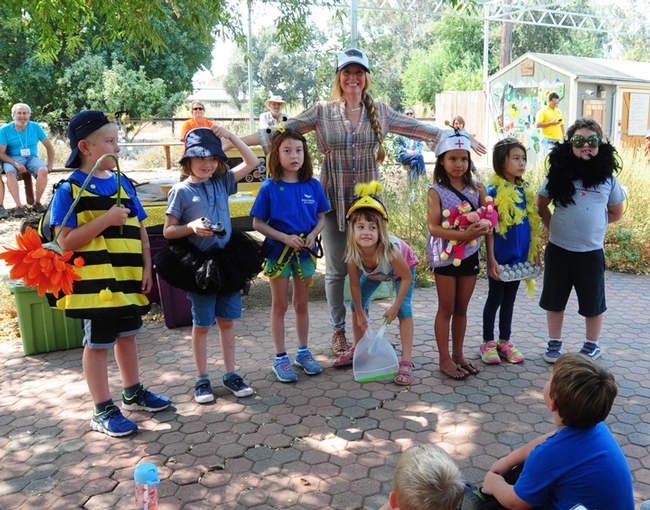
After Sarah the Bee Girl (back) read a book about bees, she quizzed them, and those with the correct answers were given props depicting those bees. These youngsters represent (from left) a forager, a scout bee, a house bee, a nurse bee, the queen bee and a drone. (Photo by Kathy Keatley Garvey)
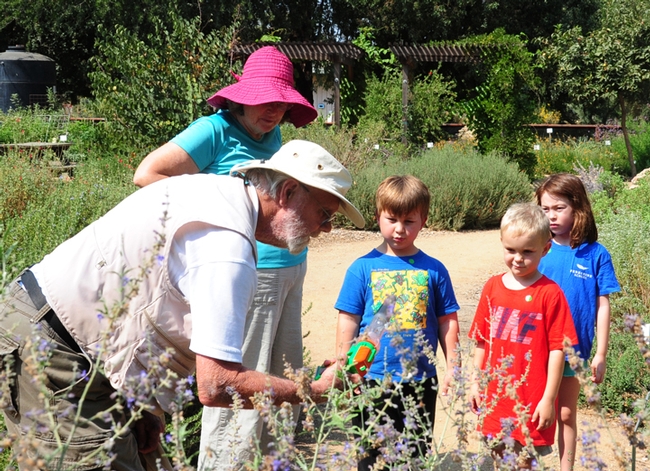
Robbin Thorp (left), distinguished professor of entomology at UC Davis, catches a bee with his device. A magnifying class enables the youngsters to see the bee up close. (Photo by Kathy Keatley Garvey)
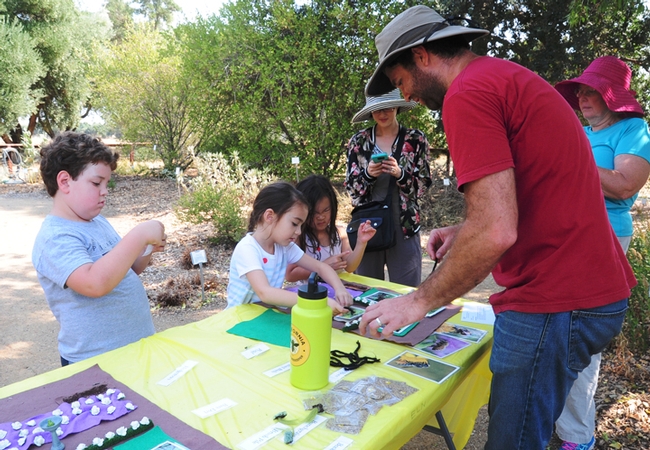
Staff research associate Charley Nye, manager of the Harry H. Laidlaw Jr. Honey Bee Research Facility, staffed the bee habitat table. (Photo by Kathy Keatley Garvey)
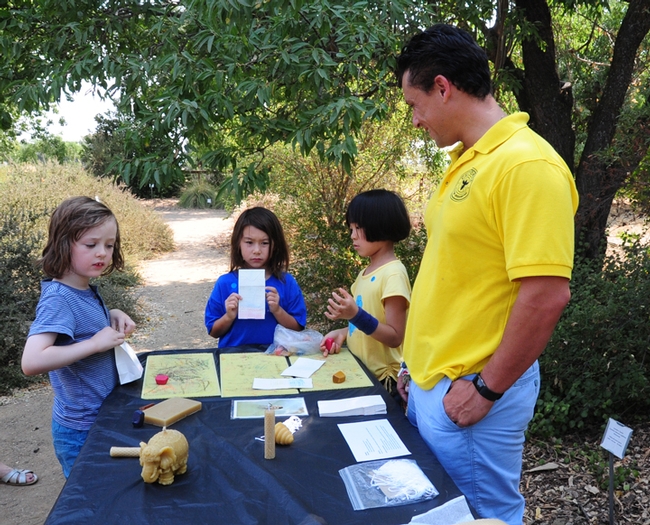
Staff research associate Bernardo Niño of the Harry H. Laidlaw Jr., Honey Bee Research Facility/UC Davis Department of Entomology and Nematology, staffed the beewax table. (Photo by Kathy Keatley Garvey)
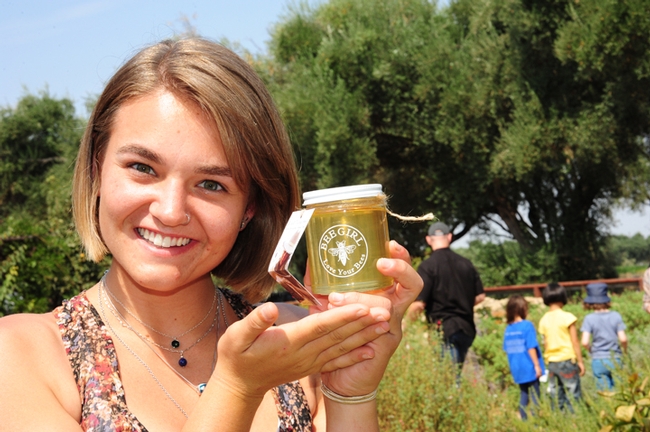
Zoe Anderson, a UC Davis undergraduate student majoring in animal biology, holds up a jar of honey bottled by Sarah the Bee Girl. Her bees foraged on vetch to produce this honey, which was the favorite of all the honeys tasted. Anderson staffed the honey-tasting table with WAS member Kari Hallopeter of Spokane, Wash. (Photo by Kathy Keatley Garvey)